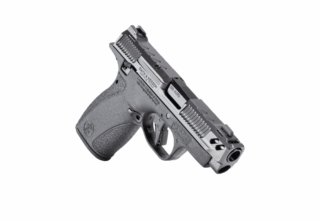There is no mythical, magical, supernatural hoodoo to maintaining a razor-sharp knife edge…and we’ll prove it
by Rob Reaser
Being a stickler for sharp knives, I have, over the years, tried most of the commercial knife sharpeners to roll out. This includes everything from the gimmicky V-notch sharpeners you can stick in your pocket all the way to the high-end electric sharpeners. Most of these products never met my personal expectations. Heck, many of them made knives duller than they already were!
As with many things, shortcuts in knife sharpening operations tend to deliver less than stellar results. In sum, there is no substitute for a properly executed hand-honed knife edge (excepting a precision edge grind from a quality knife manufacturer). The problem many folks encounter, though, is that hand-sharpening is a skill that must be learned and practiced. But take heart! The process really is easy once you get the hang of it, and it doesn’t require expensive tools and supplies.
The best edge, in my opinion, comes from the combined application of rock, steel, and leather. Of course, we must also throw technique into the mix.
To show you how to bring all of this together and to learn a skill that will stay with you for a lifetime, we’ve prepared this quick video…
An item we want to stress here is the importance of maintaining a sharp and functional edge to your knife. A knife that is excessively dulled is much, much more difficult to sharpen than an edge that is only “slightly off.” Fortunately, keeping that edge sharp and easy to maintain just means you need to touch it up after use by running it across a leather strop, a sharpening steel (I’m not a big fan of ceramic sticks), or a fine/extra hard whet stone. Do this and you’ll always have a knife that is razor-sharp and ready for work.
In this video, we are using GATCO’s Arkansas Tri-Hone as the foundation for our sharpening system. If you are going to buy a whetstone, we recommend a tri-hone system such as this because it gives you three different whet stones to gradually build an edge—coarse, medium, and fine—or you can simply use the fine stone to freshen-up a slightly dulled edge.
If you have a knife that is exceptionally dull, it may be necessary to rebuild the edge. This means re-establishing the edge angle. This is something you want to avoid by touching up the blade after use, but eventually an edge rebuild will be necessary. For this, you can use a progression of whet stones, moving from coarsest to finest, or you can bring out the big guns and cut to the chase. Having used several sharpening systems, I’ve had the best luck of rebuilding an edge by using GATCO’s Ultimate Diamond Hone Sharpening System. At $108.49, this is an investment, but it gets the job done with good results and is a fine alternative to buying an even more expensive professional-grade electric sharpener.
Our test mule for this demonstration is the Bear Ops Auto Bold Action XI. With its Sandvik 14C28N automatic-opening blade and rugged G10 handle, it’s served me well as an all-around hunting, utility, and EDC knife.
And remember…dull knives are dangerous knives. Keep ’em sharp!

















